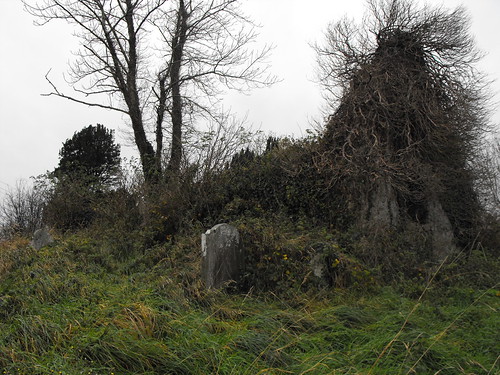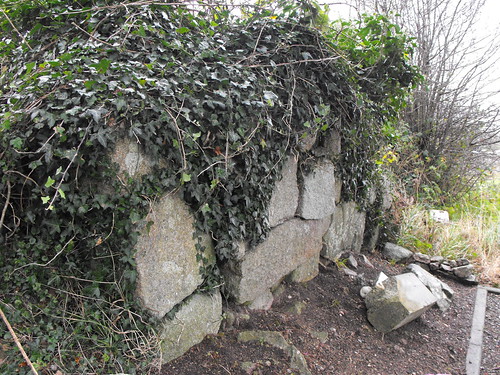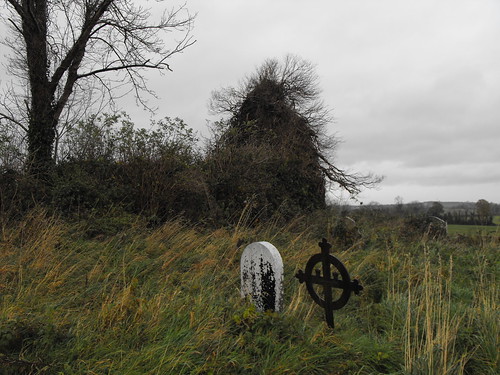O'Hanlon has a very short entry for Fine or Finia, an eighth-century abbess of Kildare, whom the great 17th-century Irish hagiologist, Father John Colgan, believed had reposed on January 9 in the year 800, an event recorded in the Irish Annals:
St. Finia or Fine, Abbess of Kildare. [Eighth Century.]
Because truth and innocence of life distinguish holy virgins, they live without stain before the throne of God. We are informed by Colgan, that Finia, Abbess of Kildare, died on the 9th of January, a.d. 800. The same year is set down for the death of this Fine, in the Annals of the Four Masters.
Although it is not expressly stated, Colgan seems to regard this day as dedicated to her memory.
It seems impossible to discover much else about this particular successor to Saint Brigid as an individual, but Christina Harrington, in her valuable work on the role of women in the Irish church, can place the office of abbess into a context for us:
The sources of material on Irish abbesses are extremely patchy, and the overall quantity of evidence quite slim. The Irish left no guiding or prescriptive texts on this office; there is no surviving correspondence such as is found in Anglo-Saxon England and which proves so illuminating for the abbess’s position there. There is a small but important quantity of legal material in which are found occasional notes concerning abbesses’ rights and privileges; there is a large amount of hagiography containing anecdotes about abbesses; and there are annal entries for abbesses of the most famous houses...
In female saints’ Lives, the characterization of the foundress serves repeatedly to restate the holy ideal not only for the ordinary nun, but also for the abbess, since in Ireland the major female saints were abbesses. As the spiritual heir of the foundress saint, the abbess was supposed to manifest at least in part her patron’s virtues and be in her own lifetime a role model in the religious life. The Lives also offer insights into the practicalities of an abbess’s duties, both to her own nuns and also to the outside world. Thus the foundress formed the prototype for the abbess’s role, both spiritually and practically....
In her community of nuns, the abbess too was the supervisor and governor, domina and mother. In the female Lives, the abbess is the person who is directly responsible for ensuring the monastery’s survival. She decides if the community is to move location. She procures food and beer in times of scarcity, and organizes help in fending off attackers in times of danger. It is she, for example, who asks for charitable help from clerics, monasteries, and other nunneries when her own community runs into difficulty.
Decisions on who joined the familia were within the abbess’s remit: it was she who approved the intake of novices and the adoption of fosterlings and abandoned babies. She was responsible for the maintenance of the moral standard and adherence to the rule. Then there were matters of discipline, and in the Lives the abbess appears as inspector, judge, and setter of punishments.
Like the foundress saint whose heir she was, the abbess had to strive to embody the seemingly contradictory qualities of world-renunciation and temporal dominion. She was to uphold the ascetic tradition whilst at the same time shoring up and even expanding her church’s sphere of control...
One of the abbess’s most important tasks in the continued work of aggrandizing her church was the provision and reception of hospitality, which in early medieval Ireland formed one of the major currencies of social interchange, social cohesion, and assertion of power and status. Failing to provide hospitality to those whose rank warranted it brought dishonour upon the failed host; providing abundantly brought status, and fulfilled economic and/or ecclesiastical obligations...
The ideal abbess was a provider of abundance to all the religious superiors who came to her community. A poem attributed to St Brigit from the tenth or eleventh century, shows her as the giver of hospitality: the feast she provides is one of spiritual nourishment, and her overlord is none less than Christ and the hosts of heaven. Hospitality was a Christian virtue and Brigit its exemplar, just as Monenna was treated as an exemplar of the discipline of fasting.
C. Harrington, Women in a Celtic Church- Ireland 450-1150 (Oxford University Press, 2002), 165-169.
Harrington has much more to say about the office of abbess, and has a particularly interesting analysis of the power that these women were able to wield in both the secular and the ecclesiastical spheres. Irish law did not see women as legally competent and some of the sources upheld the need for all women to have a male 'head'. In theory this would seem to create a problem for Abbesses as the equivalent of male 'heads' of religious communities. Yet the sources also indicate that this was not necessarily so in practice. Harrington sees the accounts of abbesses acting as confessors or soul-friends as especially important to the question of 'headship', although of course an Abbess could not hear confession in the sacramental sense. Indeed, some Abbesses were even prized as soul-friends by men, Saint Samthann of Clonbroney is one famous example. Abbesses like Fine were also drawn from the Irish aristocracy of the day and thus derived some of their authority from their connections to powerful ruling families. In her case this authority was bolstered by the fact that Fine was the heir to a foundress of exceptional sanctity, and it is surely a mark of how important a figure the Abbess of Kildare was felt to be that the Irish Annals continued to record the deaths of the successors of Saint Brigid for centuries after her passing.
This post was originally published here.





![Reblog this post [with Zemanta]](http://img.zemanta.com/reblog_e.png?x-id=6e131a6e-a462-4765-b6ec-4a1d74cd28dd)

 The Campus of Carlow College with the Cathedral of the Assumption.
The Campus of Carlow College with the Cathedral of the Assumption. 




































.jpg)


















